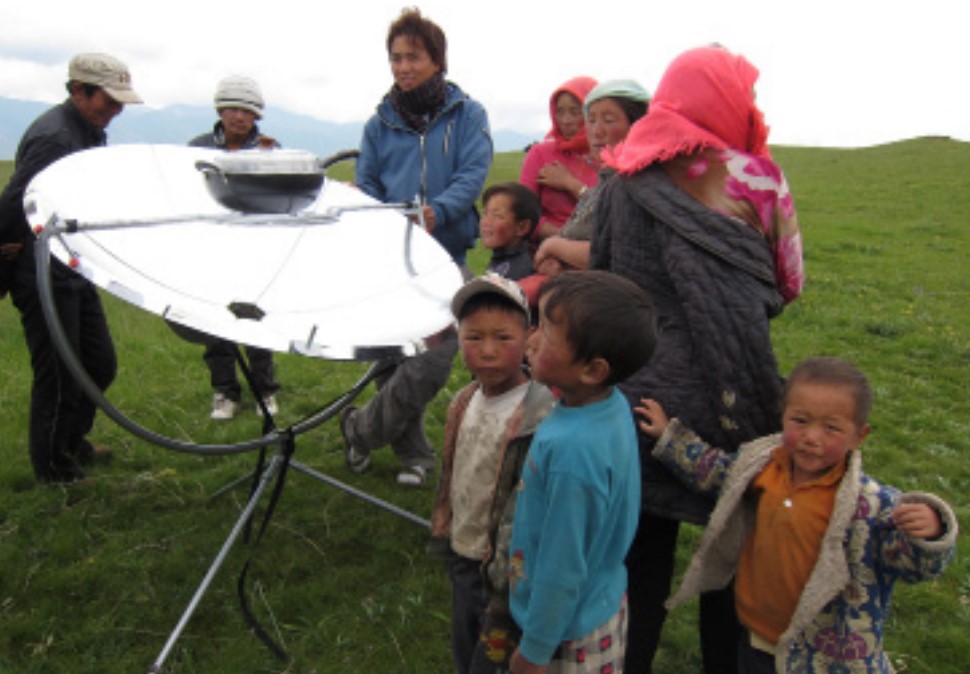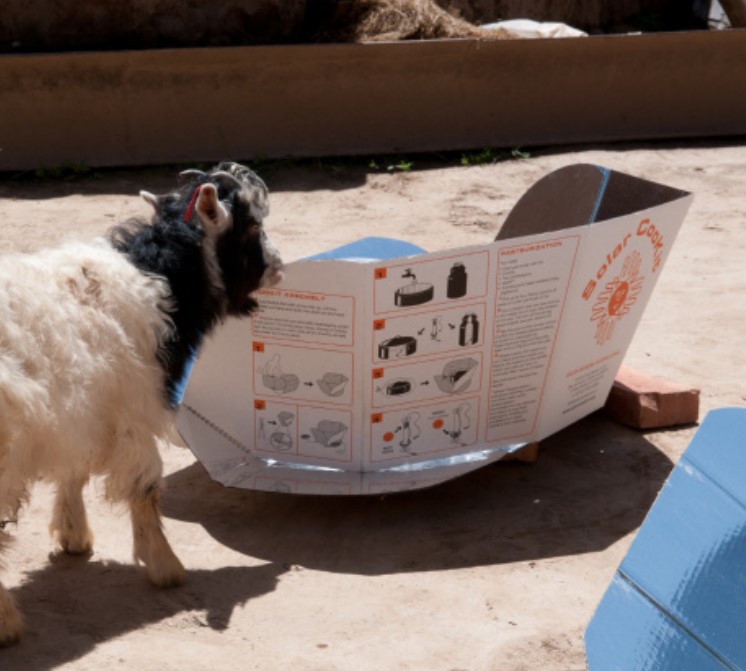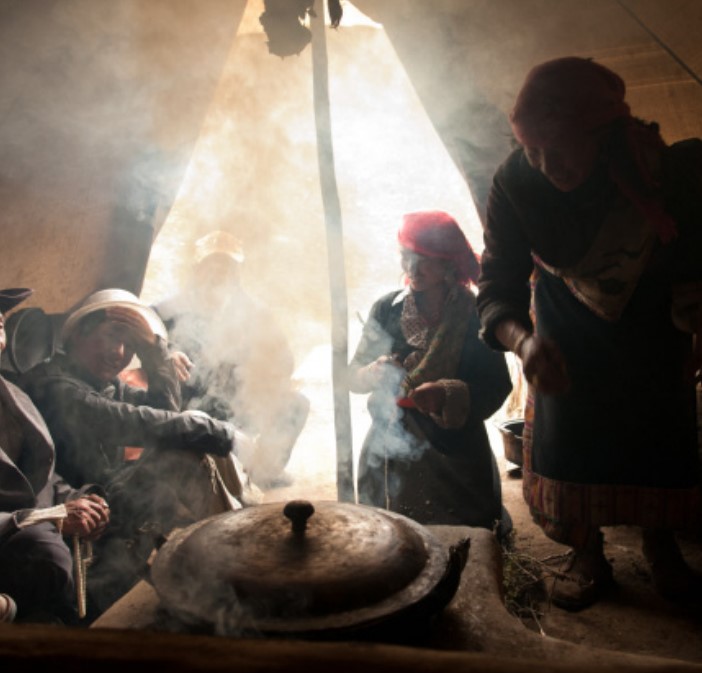| Location | Qinghai, China |
| Date | 2008-present |
| End User | 500 testers |
| Design Firm | One Earth Designs |
| Product Designer | Liam Van Vleet |
| Design Team | Scot Frank, Sloan Kulper, Caitlin Powers, Amy Qian, Chris Tolles, Tiffany Wan |
| Additional Consultants | Xire Jiancuo, Grant Kristofek, Jugui Lamocuo, Heather Micka-Smith, Brad Simpson, Orian Welling |
| Funders | Massachusetts Institute of Technology ($100 000); St Andrews Prize for the Environment; Clinton Global Initiave; Dutch Postcode Green Challenge |
| Cost per unit | Estimated $45 USD |


SolSource team boiling water with the SolSource 3-in-1 solar cooker. Photo: Scot Frank/One Earth Designs
Rural community members in rural China testing the SolSource 3-in-1. Photo: Scot Frank/One Earth Designs
Indoor air pollution is one of the leading causes of death for children under 5 in the nomadic Himalayan communities of China whose common source of fuel is biomass, or animal dung. According to Sloan Kulper, vice president and chief design officer of One Earth Designs, the US-based nonprofit is leading the movement to provide them with safer cooking alternatives. “The burning of biomass fuel is one of the dirtiest fuels you can burn,” Kulper says. “Not because it smells bad, but because of the amount of greenhouse gases and feces particles emitted in a closed environment.”
Solar cookers, which use sunlight to heat food, are an alternative for many of these mountain villages, however they have not achieved wide distribution because they are often too heavy to carry, causing many people to revert back to biomass fuels. One Earth Designs designed a small solar cooker to make the technology more accessible to remote communities. “We started by looking at how existing solar cookers were not meeting the immediate needs of people,” says Scot Frank, the company’s president and CEO.
There are a few variations of solar designs in circulation. “We experimented with box cookers, panel cookers, and parabolic cookers. Panel cookers were lightweight but not very powerful,” says Chris Tolles, development director for SolSource. Goats would eat the cardboard panel cookers, and as the traditional cooking style is open-air, over a direct source of heat, the oven-like box cookers were not ideal. It was a challenge boiling water for tea in the box ovens. “It was pretty clear that parabolic-shaped cookers were the style that would work the best,” Tolles says.
However, the heavy concrete parabolic cookers already in existence came with some insurmountable limitations, according to Frank. “In addition to a nomadic lifestyle, weight is a significant factor in distribution of the cookers. With cookers weighing 70 to 90 kilograms (155 to 200 lb), big trucks are needed for delivery, which cannot reach many rural areas in China.” The team realized that they should design a solar cooker as light as a panel cooker, but with the abilities of a concrete parabolic cooker. The reflector of the SolSource cooker is thick pieces of Mylar film laminated to each other. The inside is metalized and weather resistant, and the outside is stiff and durable. The panels are made of metallized, weather-coated plastic and secured with replaceable fasteners. The base is powder-coated welded steel.
The SolSource team used user feedback to improve on their design. “It was the community that suggested the concept of the three-in-one design,” says Product Design Consultant Liam Van Vleet. “Two additional features, heating and electricity generation, both came out of requests from community members.”
One Earth Designs turned to familiar fabrication techniques and materials for SolSource. “For materials, we wanted to use all local materials that are found in Ching Hai and our design process was informed by local stitching, tailoring and craft,” Kulper says. “In addition, we incorporated welding, metal and woodworking into our initial prototypes.” This detail is important for community members. “The SolSource has parts that we can repair if something breaks,” says a Waku Village resident.
“I’m very happy to see a design comeing from local ideas,” a Quma Village resident says. “Too many projects here come from outside ideas and then no one knows how to use them.



Goat nibbling cardboard solar cooker. Photo: Scot Frank/One Earth Designs
Indoor air pollution from traditional stoves is a health risk. Photo: Scot Frank/One Earth Designs
Solar cookerstend to fall apart and people living in remote areas don’t have the materials to repair them. Photo: Scot Frank/One Earth Designs
















READ OR LEAVE A COMMENT